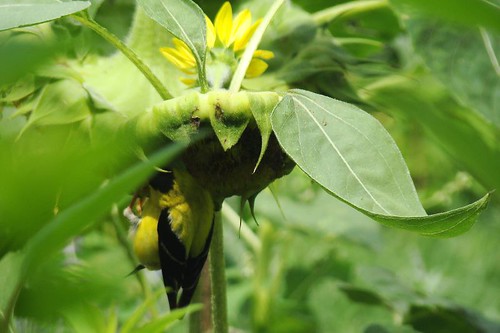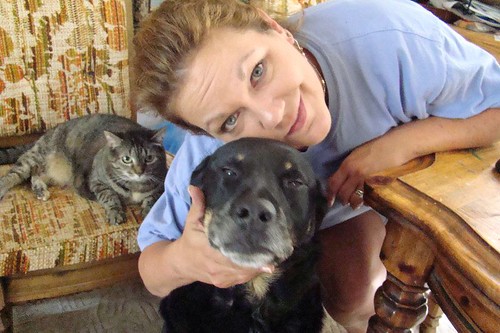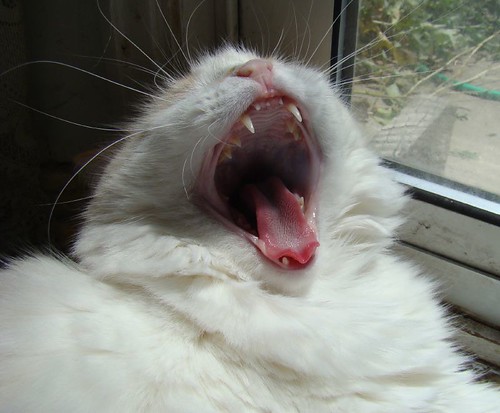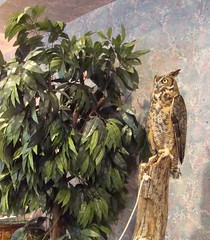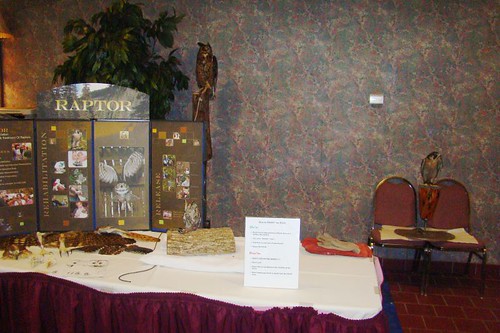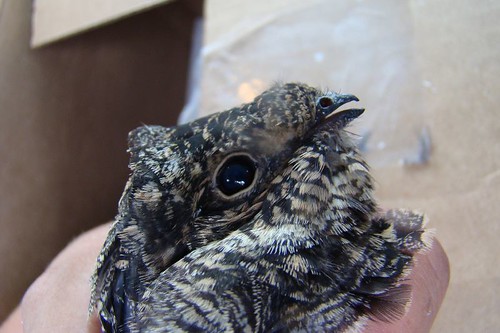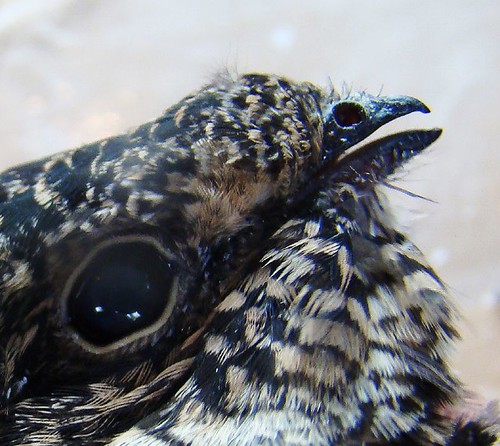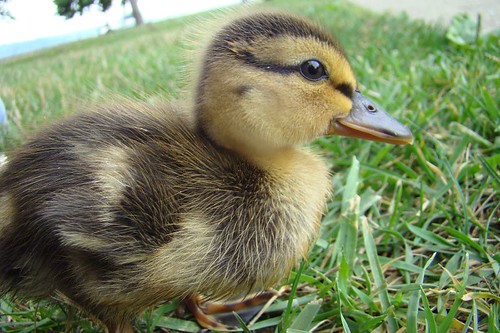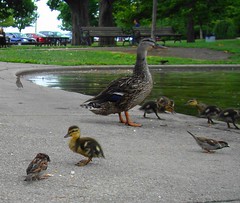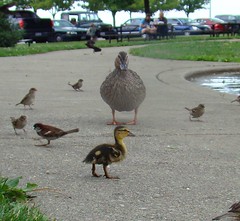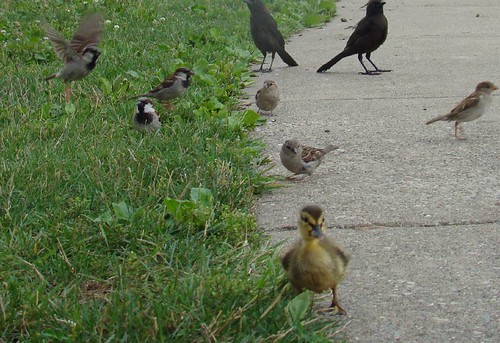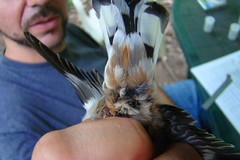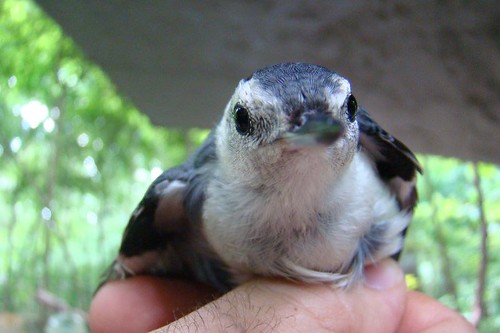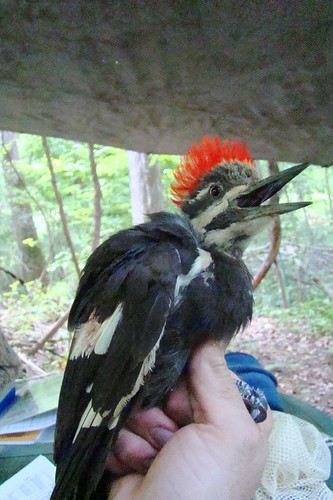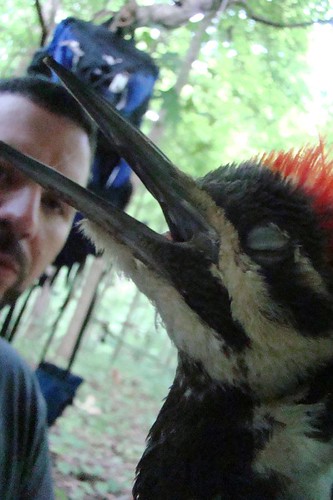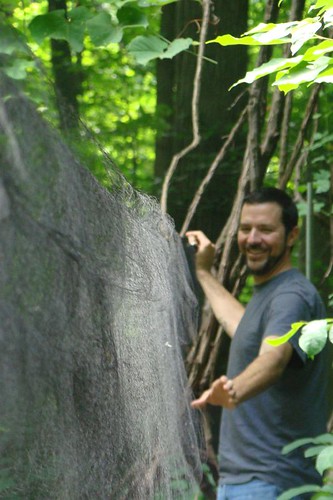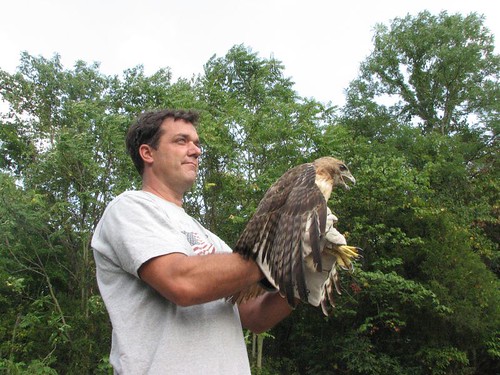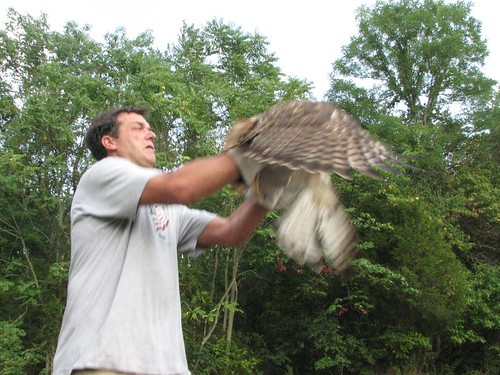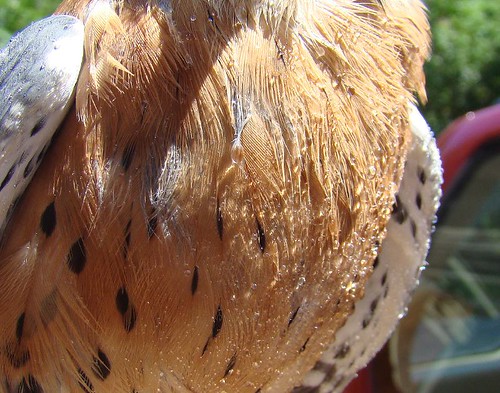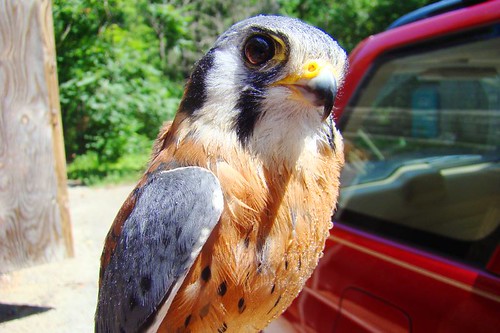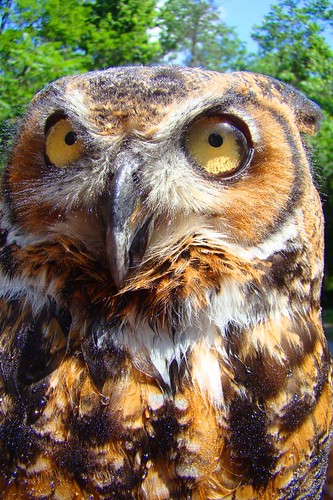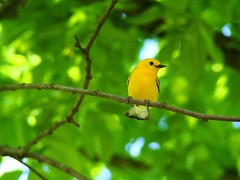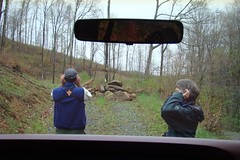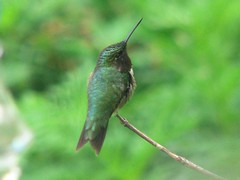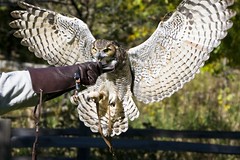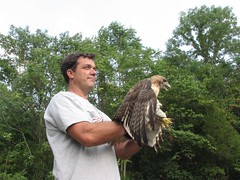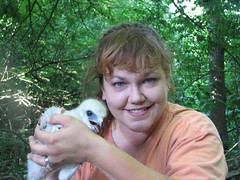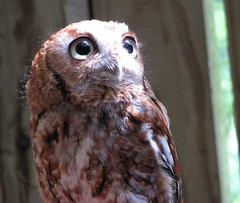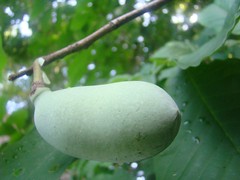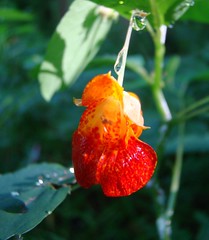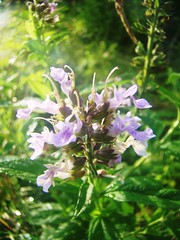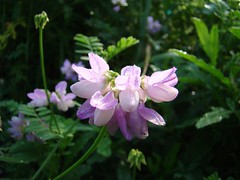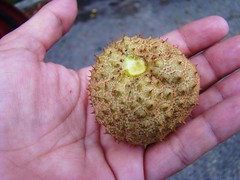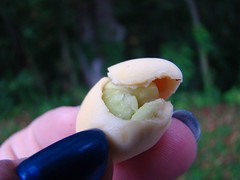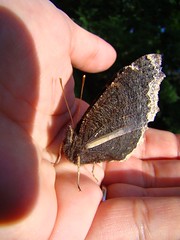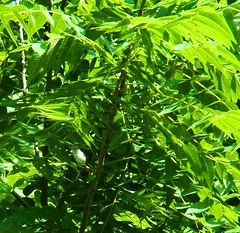When I have a day like I did today, I thank my lucky stars that I found Nature.
Some people find Jesus...but they will have to excuse me if I think wild things and the outdoors are a bit more riveting.
The day began with the discovery that "Monty" our windowsill Monarch chrysalis, had turned to black. (It actually turns transparent, but the blackness of the new butterfly makes the chrysalis look black...just means it's ready)
On July 7th, "Monty" was a tiny (10 mm) caterpillar:
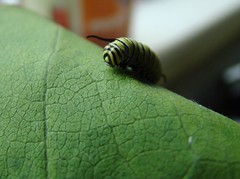
By July 17th, it was as large as my pinkie finger:
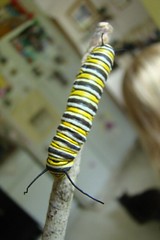
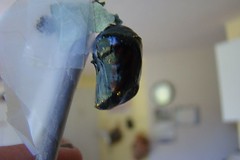
*See the small splits near the top? Ready to pop!*
Non-nature peeps: Monarch butterflies lay their eggs on toxic plants like Milkweed. The caterpillars, after hatching, eat the Milkweed leaves, ingesting and storing the toxins in their bodies. This makes them taste VERY bad to birds and other critters who would try to eat them. After two weeks of eating, the caterpillars hang from a nearby stick and go into the "J" position (they really look like a "J"!) and their skin splits open to reveal a perfect jade-gold chrysalis. After about 10-12 days, they emerge as a beautiful Monarch butterfly.
The really WILD part: when the caterpillar is encased in the chrysalis, it becomes a blob of nondescript
GOO. No discernible parts at all...the
goo then reassembles into a
butterfly.
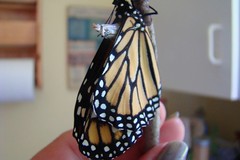
All the way out of the chrysalis...that bit of gray film is a bit of the chrysalis stuck to one of the antennae. I was worried about this when it became a chrysalis...a small tear developed in the chrysalis when it formed.
They are wet and soft at first, and the caterpillar had chosen a bad place to "J", up against one of the milkweed leaves, and the skin retracted and pulled on the fresh chrysalis. The weight of the chrysalis pulled it open a bit, so I
very very very gently cut the skin away from the chrysalis and used a Q-tip to push the torn bit back to the chrysalis.
They really have to hang perfectly free from anything to develop properly...and a tear in the chrysalis could possibly not bode well.
And so I fretted for 10 days.
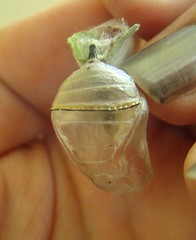
*Empty chrysalis*
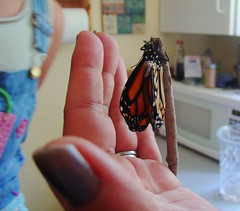
*After very very very gently removing bit of left-over chrysalis*
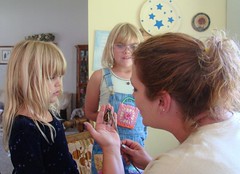
The girls (and I) were just floored by all this. It even brought Geoff down from his office, to take pictures of this little miracle.
I took the new butterfly outside for warmth and sunshine.
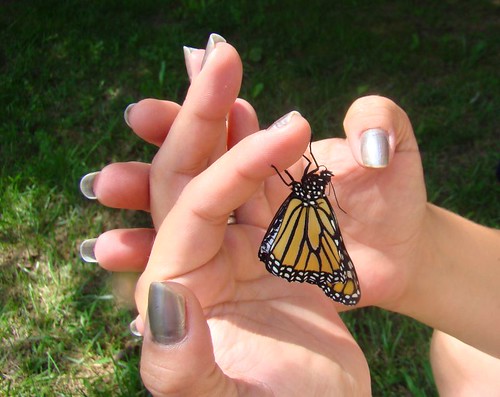
When they emerge, the wings are wet and crumpled. They pump fluid from their bodies into the wings until the wings become stiff. And then it's time to fly.
After the wings dried, I checked to see if "Monty" was a male or female. The way to tell:
Male Monarchs have a black patch of "sex scales" on their hindwings. "Monty" didn't have any sex scales. "Monty" was a girl.
Lorelei got the honor of naming this girl butterfly. So "Monty" became "Veronica".
(Geoff has been reading old Archie comics to Lorelei at bedtime.)
:)
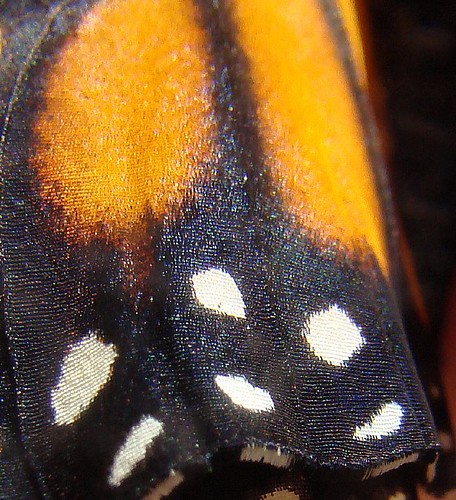
*Macro of one of Veronica's wings. Shimmering, overlapping scales. Reminds me of feathers.*
Veronica was placed in the milkweed patch, where she could get some peace and some nectar.
More cool things about monarchs:
Monarchs born in the early summer have a life span of less than two months. They reproduce and die.
Monarchs born NOW are genetically different from the ones born earlier. They enter a state called diaphase, a non-reproductive state, and can live for seven months.
Veronica, along with millions of her kind, will migrate to places like
Mariposa Monarcha Biosphere Reserve in the Mexican states of
Michoacan and
Mexico.
The generation that overwinters won't reproduce until it leaves the overwintering site in February or March. Their children will complete part of the journey, and the third and fourth generations past Veronica's will return to the home locations in the US and Canada.
So no single butterfly makes the entire round trip.
And we aren't sure as to how the species returns to the same overwintering sites every year. Still being researched is the theory that they use
circadian rhthym or that the flight patterns are inherited.
Even cooler: People are
tagging monarchs (like bird banding, but tinier).
And today, our household was a minuscule part of a vast journey that spans continents.
Veronica will spend her life in Mexico, enjoying the company of millions and millions of butterflies being born now, east of the Rockies. (Western monarchs overwinter on the California coast.)
This is so unbelievable cool.
After all that, Isabelle and I walked down the driveway to get the mail. Walking back, we saw a red-shouldered hawk on the fence near the prairie. And I had my camera.
*Of course I take my camera with me to get the mail. Doesn't everyone???*
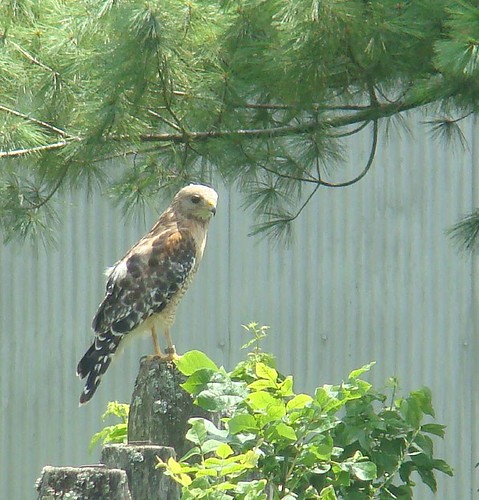
Notice anything about this bird?
Banded. Hot damn. A banded RSHA. This is the first banded hawk we have seen in the yard.
Their appearances in our yard are cyclic. Many in the winter, many in the summer. Virtually zero in between.
I couldn't even begin to read the number on the band, but I notified Jeff Hays (from
this post and
this post). From what I remember, none of the resident adults were ever banded, so this is likely one of the chicks born around here in the past few years. Or it could be a bird from somewhere else. Either way, I was happy to see it.
It was very very very interested in the critters that live in the prairie. See why I built it?
Raptor food!!!!
All in all, a great day.
I better go lie down now. All this delicious nature stuff has me lightheaded.
